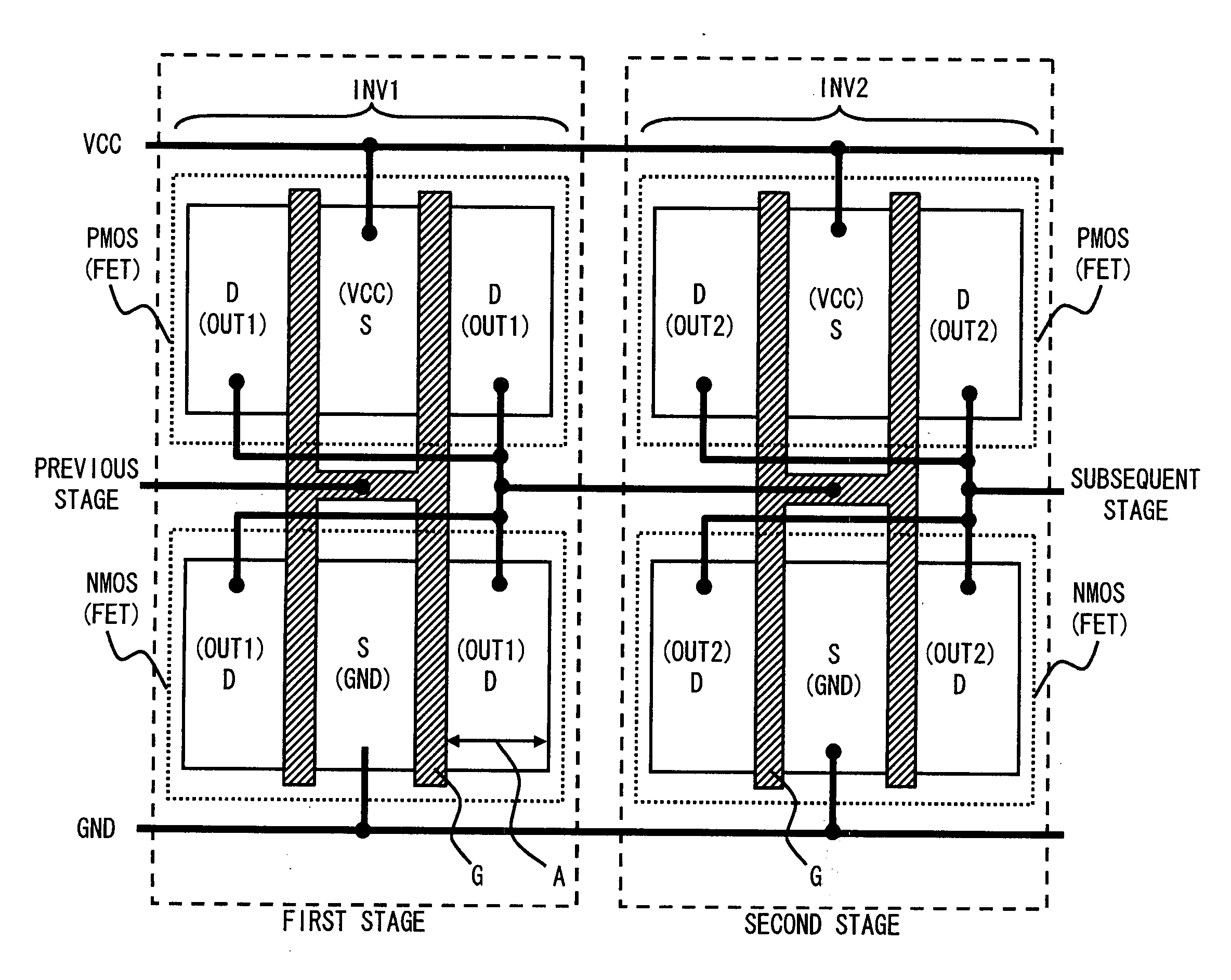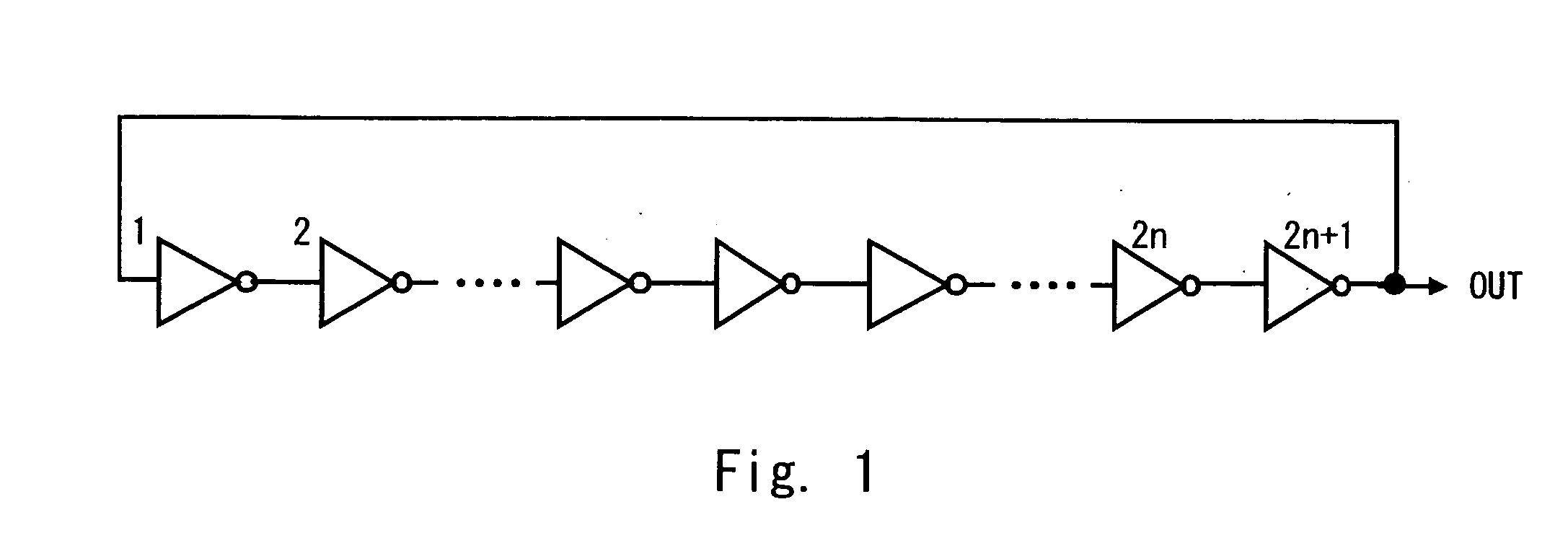Semiconductor device
a technology of semiconductor devices and nodes, applied in the direction of semiconductor devices, electrical equipment, transistors, etc., can solve the problems of reduced operational speed, soft error, and recognized problems, and achieve the effect of suppressing the potential change preventing the inversion of the logic type of the drain region, and increasing the capacitance of the nod
- Summary
- Abstract
- Description
- Claims
- Application Information
AI Technical Summary
Benefits of technology
Problems solved by technology
Method used
Image
Examples
first embodiment
[0038]FIG. 1 shows an oscillating circuit according to a first embodiment of the present invention (for example, ring oscillator circuit). As shown in FIG. 1, the ring oscillator circuit is composed of an odd number of logic circuits (for example, inverter circuit) which are connected in series. The ring oscillator circuit of this embodiment is formed on, for example, a silicon semiconductor substrate. FIG. 2 shows a layout of two of inverter circuits that constitute the ring oscillator circuit.
[0039] Referring to FIG. 2, the layout of the first embodiment is described in detail. As shown in FIG. 2, each inverter circuit has two field effect transistors (for example, PMOS transistor and NMOS transistor). The inverter circuits are connected in series so as to function as the ring oscillator circuit. In the following description, the direction from the left to the right of FIG. 2 is referred to as the X direction, and the upward direction of FIG. 2 is referred to as the Y direction. ...
second embodiment
[0051]FIG. 3 shows a layout of an inverter circuit according to a second embodiment of the present invention. The layout of the inverter circuit of the second embodiment differs from that of the inverter circuit of the first embodiment in that a well potential diffusion layer region well (N-type diffusion layer) and a substrate potential diffusion layer region sub (P-type diffusion layer) are added between the two inverter circuits. The same layout portion as that of the first embodiment is assigned with identical reference numerals and description thereof is omitted here.
[0052] The layout of the inverter circuit of the second embodiment is described as below. The inverter circuit of the second embodiment has the well potential diffusion layer region well and the substrate potential diffusion layer region sub provided between two adjacent inverter circuits. The well potential diffusion layer region well is connected with the power supply potential VCC, and is formed between two adj...
third embodiment
[0055]FIG. 4 shows a layout of an inverter circuit according to a third embodiment of the present invention. A layout of the inverter circuit of the third embodiment differs from that of the inverter circuit of the second embodiment in that the numbers of source regions and drain regions of each transistor are increased. The same layout portion as that of the second embodiment is denoted by identical reference numerals, and description thereof is omitted here.
[0056] The layout of the inverter circuit of the third embodiment is described in detail below. The layout of the inverter circuit of the third embodiment is substantially the same as that of the inverter circuit of the first embodiment. The following description is focused on a difference between the first embodiment and the third embodiment.
[0057] The gate electrode G of this embodiment extends in the Y direction with a rectangular shape. Four gate electrodes G are provided for each transistor pair (the NMOS transistor and ...
PUM
 Login to View More
Login to View More Abstract
Description
Claims
Application Information
 Login to View More
Login to View More - R&D
- Intellectual Property
- Life Sciences
- Materials
- Tech Scout
- Unparalleled Data Quality
- Higher Quality Content
- 60% Fewer Hallucinations
Browse by: Latest US Patents, China's latest patents, Technical Efficacy Thesaurus, Application Domain, Technology Topic, Popular Technical Reports.
© 2025 PatSnap. All rights reserved.Legal|Privacy policy|Modern Slavery Act Transparency Statement|Sitemap|About US| Contact US: help@patsnap.com



